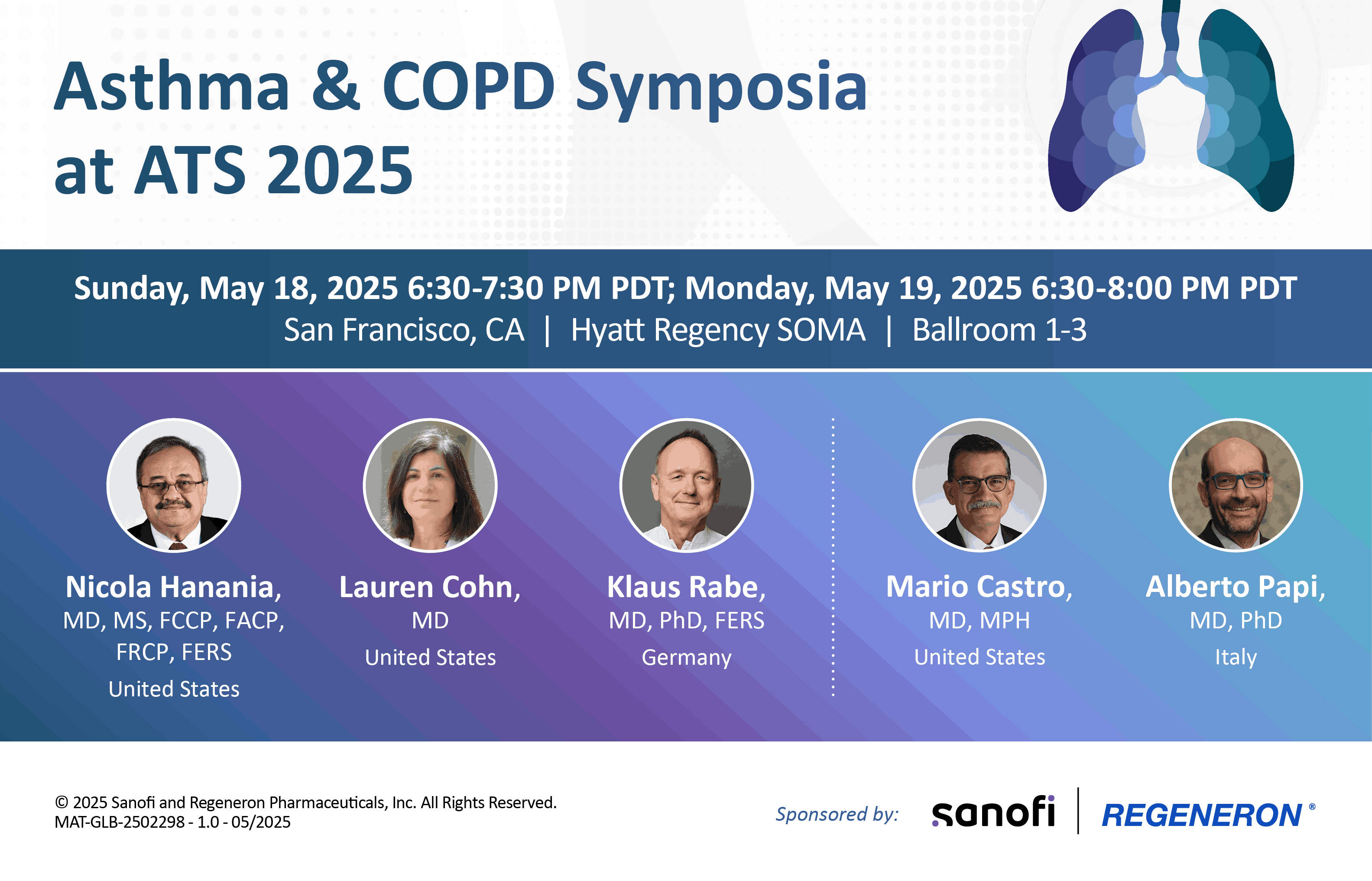On Sunday, May 18, 2025, from 6:30-7:30 PM PDT, join global experts Nicola Hanania, Lauren Cohn, and Klaus Rabe for an educational symposium titled, “Expanding Our Understanding of COPD: The Role of IL-33 in Chronic Airway Inflammation”. They will discuss the burden of COPD, the role of IL-33 in disease pathophysiology, and key insights from clinical trials. The learning objectives of the symposium are to communicate the burden of COPD, including its impact on patients’ QoL and the unmet needs that persist. Describe the role of IL-33 in the pathophysiology of COPD, including its contribution to inflammation, airway remodeling, and disease progression. Understand the clinical trial data investigating the impact of targeting the IL-33 pathway in COPD.
On Monday, May 19, 2025, from 6:30-8:00 PM PDT, join global experts Mario Castro and Alberto Papi for an educational symposium titled, “Treating the Whole Patient: Is Controlling Exacerbations Doing Enough in Asthma and COPD?”. They will explore the similarities and differences across asthma and COPD, present data on these two diseases, and discuss the value of early intervention and the potential for disease modification in the lower airway. The learning objectives of the symposium are to identify the roles that type 2 inflammation plays in the pathophysiology and disease course of asthma and COPD, understand the concept of airway remodeling in asthma and how intervention may impact these processes, and explore clinical data and studies in COPD.
These symposia will conclude with an interactive Q&A with our distinguished faculty, so please come ready with any questions you may have.
Asthma and COPD are chronic, heterogeneous, inflammatory diseases of the lower airway characterized by airflow obstruction, shortness of breath, and exacerbations, which are serious acute respiratory events marked by heightened respiratory symptoms. Despite advances in care, exacerbations remain a significant clinical challenge, contributing to lung function decline, frequent hospitalizations, reduced quality of life, and increased mortality. It is therefore important for healthcare professionals to recognize both the shared inflammatory mechanisms and the distinct ways these diseases may present in clinical practice.


